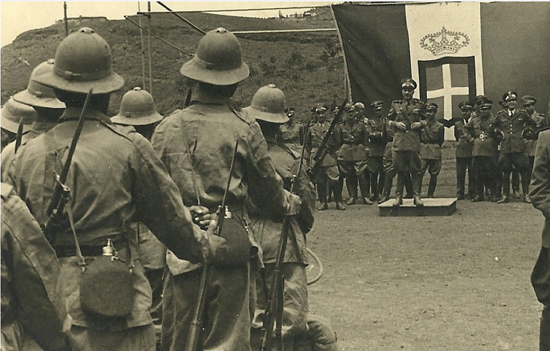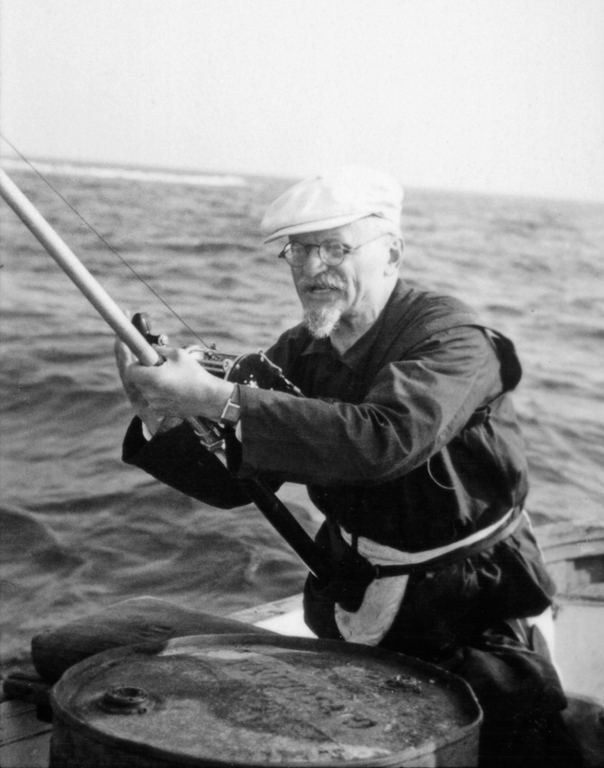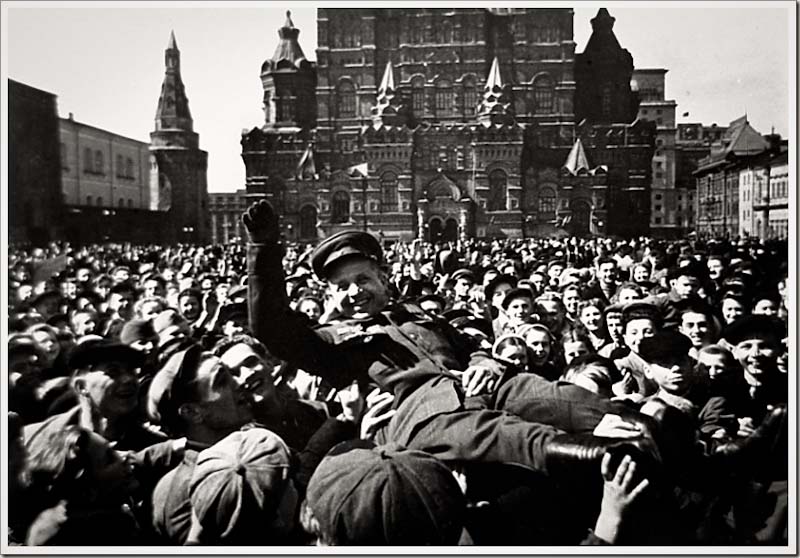State of the World War.

The Empire of Japan entered the world war as the subjocator of the once mighty China. Having vast resources at her disposal and confident of her former victory Japan, Italy and Germany developed the Tripartite Pact into a full fledged alliance. Soon the Asian Co-Prosperity Sphere joined the Pact of Steel in their wars against the Commonwealth of Nations. This led to a rapid Japanese conquest of most of the Pacific, only being stopped in Signapore, Burma, Hong Kong and Australia, and Indonesia, the crown jewel of the Dutch colonial empire, fell to the Imperial forces of Japan. The islands north of Australia was all conquered by the ferocious Japanese warrior. Australia herself became the victim of bombing campaigns from airfields on small islands such as Guadacanal and larger from ones from Papua New Guinea. But this major expansion, combined with their drive to the Bering Strait worried USA. Ever since the rape of Nanjing the public opinion in US had been against Japan, US intervention in the Pacific War was crucial for the current situation in the Pacific.

Hopefully the volcanic rock won't be useless..
Perhaps the greatest testimony of US power projection was Iwo Jima. What for the soldiers on the field was nothing but a volcanic rock transformed to a massgrave was in fact the first time any of the allied nations occupied Japanese soil, conquering a part of their very soul. Of the 110.000 Americans participating in the battle around 70.000 counted among the V. Amphibious Corps, the 3rd, 4th and 5th Marine Divisions and the 147th Infantry Regiment. Despite bombing the island for days and reducing it to nothing but a smoking rubble the Japanese defenders was well entrenched and fought gallantly for the island despite the overwhelming American forces. The IJN tried numerous times to break the USN grip on the island, but failed numerous times. Their last effort to liberate the island from sea was at the 1st of January 1943, at the loss of a battleship and an aircraft carieer. The objective of the Iwo Jiman campaign was to gain the airfield (both to disrupt Japanese aerial campaigns and to gain a base of operations for US escort planes) and to use the island as a springboard into Okinawa or even Japan itself. But despite the tall casualties on both sides during the 35 long campaign US high command found little use for the airfield. Of the over 17.000 dead Japanese soldiers, only 216 surrendered. This was a forewarning of Japanese zealoutry when fighting on their own homeland. Still this battle proved to the US, Japan and the world that the allied forces was able to take on Japanese home territory and that the days of Japanese dominance in air and on the sea was over.*
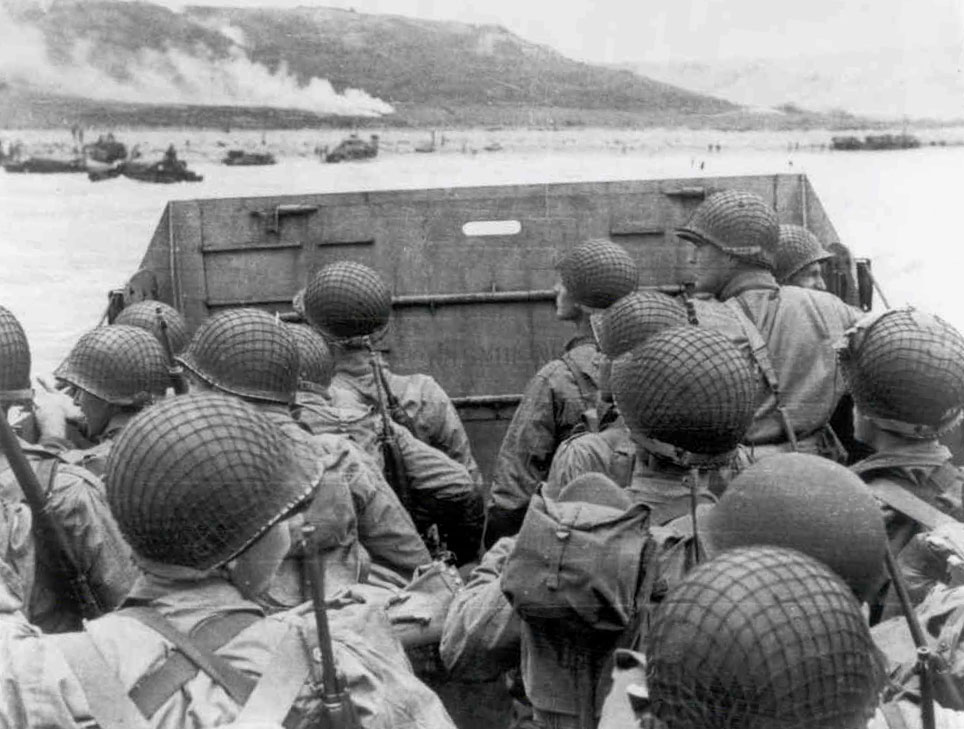
American soldiers island hopping. Destination: Okinawa.
Following the successes in Iwo Jima US high command prepared to launch an offensive into Okinawa. 17 US divisions, spearheaded by the 10th Army, was given the task to invade the islands from Iwo Jima and the Phillipines. If US forces controlled Okinawa they would pose a serious and dangerous threat to Chinese and Japanese mainland, and put an end to the war. But following the experiences from Iwo Jima and the other battles that will soon be detailed, US commanders and soldiers alike dreaded the moment they were to invade core Japanese territory. It was certain to become ugly.**
Palau is still a hotly contested island, hopefully the sacrifices won't be in vain.
Another battle that had turned ugly was the battle Palau. Like Iwo Jima the goal was to gain an airbase and a base of operation in general in the area. But the battle that started on the 18th of November was still not over. The 1st Marine Division and 81st Infantry Division had as of yet failed to break the Japanese garrisons. It was believed it would take another month or so to gain complete control of the island chain. Despite outnumbering the Japanese forces 4:1, the Americans would suffer around 2000 casualties at the hand of 10.000 Japanese casualties and it would indeed drag on for another month. The battle became renowned for its grueling conditions and getting known as "the bitterest battle of the war for the Marines". Still with US forces taking most of Palau and Iwo Jima the noose was tightening around the neck of the God Emperor.
The results of American island hopping, complete control of the Pacific.
Looking at the Pacific Theater for the Americans as a whole one can see their dominant position that they had attained in the prior months. The islands leading up to Japan had come under American control because of amphibious landings and naval dominance. This in turn was secured mostly because of their strategic positions in Guam, Wake Island, Midway and the Phillipines. As USA joined the war the Japanese tried to invade Guam and the Phillipines, but they failed. This would in turn lead to US forces gaining a foothold in the Pacific region and to in turn project that position to command and control the Japanese pacific possessions. However with the war in Europe over USA was ready, as the UK and USSR, to focus on battling their common Imperial navy. Roosevelt and Lord Halifax had agreed upon the "Germany First" strategy. In short this entailed that British and American forces should focus on battling the German foe, the Land of the Rising Sun was still on the horizon. But with Germany and Italy defeated US troops could send most of their navies and armies and their respective air forces to the theater. The bases in the Phillipines, US territories and islands such as Palau and Iwo Jima was potential staging grounds.***
Japan cling on to their favorite tourist locations of '38-'42.
The Australasian theater had also changed rapidly. The Dutch and Australian islands had fallen to Japanese occupation, but with the US Navy dominating the seas it allowed for ANZAC, South African and British forces to deploy their forces with greater room of manuever. However the fighting soon took to a stillstand. But then USA, again, reverted the rules of the game. It started with an offensive into Guadacanal by the 1st Marine Division and later on a general invasion of the various islands, before reinforcing Papua New Guinea and pushing the Japanese invading forces slowly but steadly toward four small pockets in the region. Still the Japanese bombing raids ended over Australia, and the threat of invasion had come to an end.
Smoking kills.
But how did Japan lose their possessions in the Pacific and lose the war? It all started near Pearl Harbor as USA entered the war. The Japanese hoped to attack the port, but Soviet, American and British intelligence services had decoded the attack. The US forces instead went head on, they attacked. While the Japanese planes was heading toward Pearl Harbor American planes lifted from the American carriers and attacked the Japanese task force while the American fleet got into position and attacked the IJN. Japan lost all in all 4 carriers, 2 battleships, 2 heavy cruisers and numerous smaller ships. Following this the US Navy and Royal Navy pursued an aggressive stance hunting down the Japanese Navy. They got word of an impending attack on Guam and the Phillipines, instead of a Japanese amphibious invasion the Japanese navy suffered irreversible defeats throughout 1942. The US Navy and Royal Navy slowly but steadly followed up with naval offensives in the Solomon Islands, Coral Sea, Micronesia, Phillipines and the Mariana sea. By 1943 the once proud Japanese Navy was reduced to two carriers, four battleships, a lone battlecruiser companies with a lone light cruiser and a lone destroyer.
Hopefully Japan will continue to pour troops to the mighty Empire of Siam.
But the war continued on in other theaters where the US was not engaged in. One of them was British Malaya and Siam, or Thailand. Just a year earlier Siamese and Japanese forces had reache the outskirts of Singapore. If Britain lost this region they would essentially lose control of the region and deprive their empire of much needed resources. But following Japanese defeats further east several Commonwealth divisions and brigades was transferred from the Corals and Solomons to Malay. In 1943 after years of horrible jungle warfare Allied forces had pushed the Axis almost all the way back to Siam proper.
The full might of the British Empire descend upon Siam and Germany?
However this northward push was helped by British and Indian offensives from British-Raj. Japan, Siam and Chinese forces had diverted extradionary amounts of resources to control Burma. In order to make Malay and India fall, but most importantly to gain their rubber industry and to close the Burma road that enabled Chinese resistance in Japan controlled China and it was a potential site for an invasion of China. The Burma-Yunnan-Siamese border area had developed into a massive battleground where hundreds of thousands perished in the jungles of the region, it was difficult to see if most died due to the traumatic conditions, battles or the many diseases. Or a mix between all of them. But by late December of '42 Australian, New Zealander and British forces launched a daring amphibious offensive to take on Bangkok itself. They succeded and now threatened to encircle Siamese and Japanese forces and to take on Nazi fanatics who had established themselves in Indochina. In Indochina these fanatics managed to force the natives to serve in their battles and attract French nationalists and right wingers who believed only the Axis could liberate their motherland from communism.*****
Is the liberation of China at hand?
By 1943 the British stepped up their game in southern China, now having 32 divisions or brigades in the region. This put immense pressure on Japan as they were threatened by the Soviet Union from Sinkiang and Mongolia. USA from Iwo Jima, Palau and the Phillipines. The Commonwealth in Burma and Malaya and finally British and Soviet forces in southern China. The noose was instead tightening around the Emperor's neck. Would it break him, or would he manage to escape it?
The price for freedom.
Yet the three seperate wars (the German-Little Entente war that ended years earlier, the Allied-Axis war and the Soviet-Axis wars) that became known as the Second World War demanded unimaginable sacrifice. It was estimated that during the German-Little Entente War, Germany had around 292.000 casualties, while France had around 407.000 casualties with the rest of the Entente around 280.000 casualties at a total of 572.000. But these numbers paled in comparison on what was to come. The Allied-Axis war claimed 4.94 million losses among the Axis and 3.15 million among the Allies. On top of this the Axis lost 3.64 million in their war against the communists, while the Internationale lost around 8.81 million losses. The Second World War had thus far claimed 21.11 million casualties. And that was just among the estimated military casualties, civillian ones was projected to be far higher. It was now 1943 and Japan was for now on the retreat, but who knew how the war would develop in the future. All participants in the war, worker or soldier, Japanese or Greek or Russian had a long walk ahead. The outcome of the war would define generations to come and humankind as a whole.
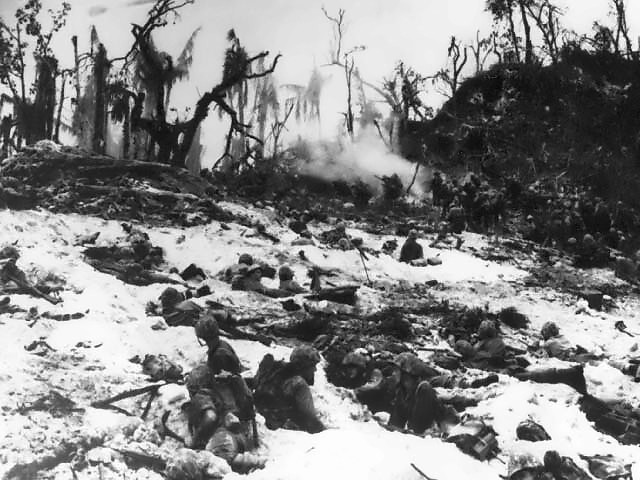
"We shall fight them on the beaches".
-----
*So the numbers on the fighting on the islands are based upon IRL casualties. I have no idea how they went in the game, they are likely to have minimal casualties.
**So I just tagged US to check out their future plans. And they are quite competent surprisingly, planning to invade Okinawa with 17 divisions! It remain to be seen if that actually happens.
***Im actually surprised on how capable the AI were to take these islands. Hopefully this will lead to US forces pouring to the area and taking on China or Japan.
*****So well Germany still have Indochina. And they maanged to recruit 9 or 13 divisions. I can't imagine that being German based divisions to be honest

Okay so I divided this update to two parts. This one is about the current war in a broader view, so it is more focused on the Allied part of the war as opposed to the Soviet efforts as we usually see. The next one will be more boring with just quickly glancing over the current Soviet industry, stockpiles, production and techs. I do this simply if you're interested to get a glance at what isn't covered in the updates and/or to get a more whole impression of the progression of the war.

























